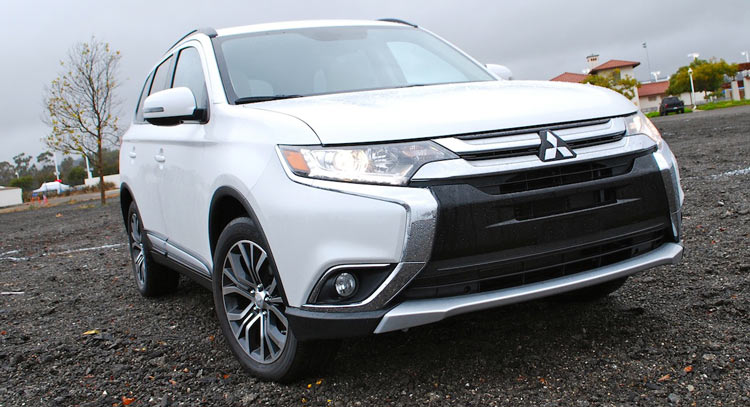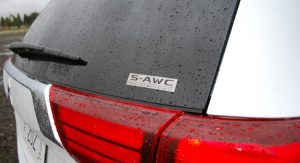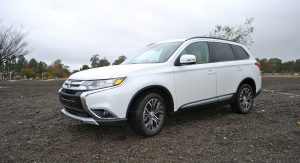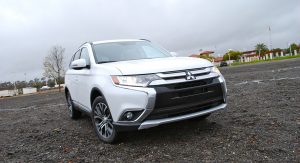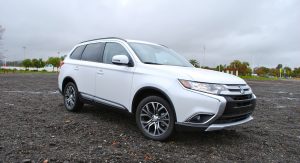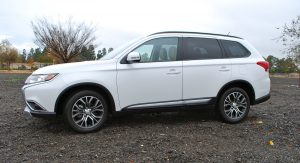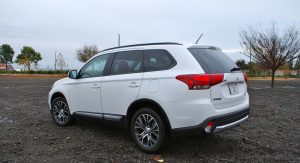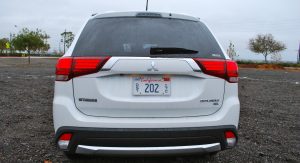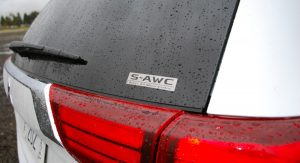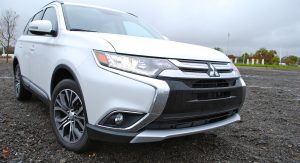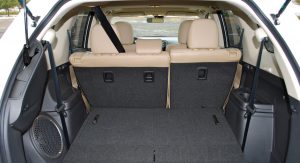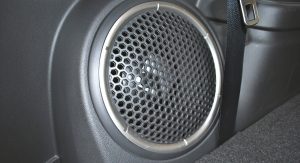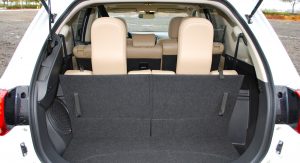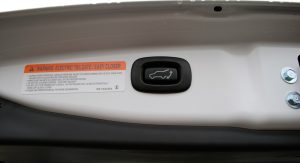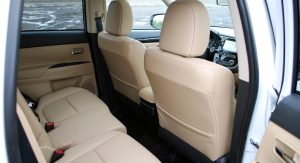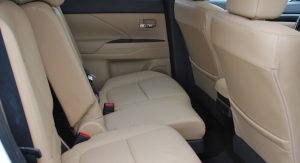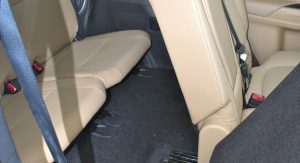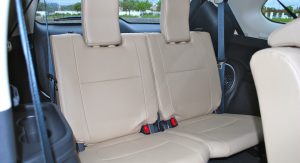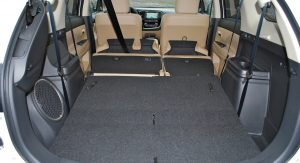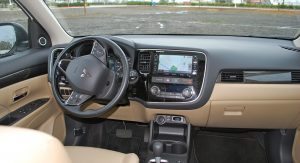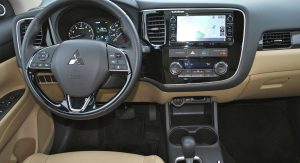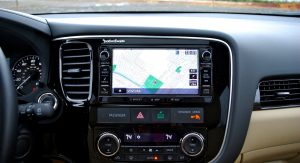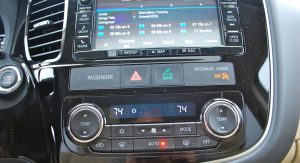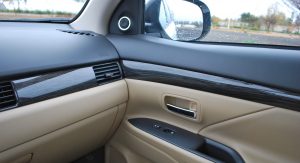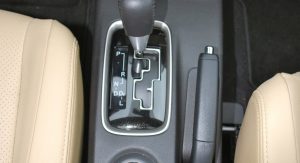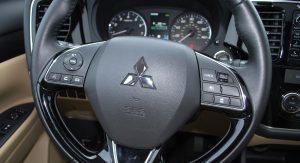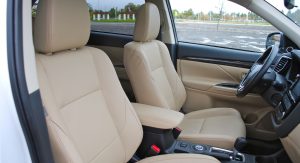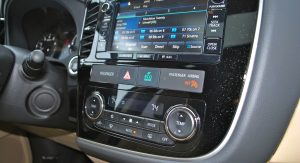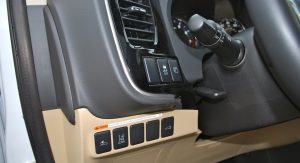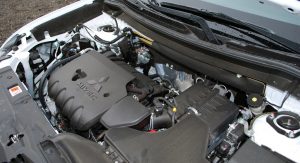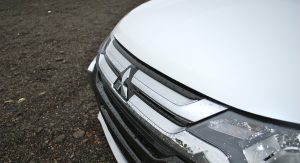Journalism professors jokingly tell students to avoid clichés like the plague; they’ve told me they’re are an epidemic among sports journos. Apparently they haven’t met many auto writers.
“Poor Mitsubishi” is overused in reviews of cars like the 2016 Mitsubishi Outlander, as much as it is to shed a tear for the late, great Lancer Evolution. They’ve just closed their U.S. plant after 25 years and the diminutive and cheap Mirage is their best-selling car now.
The Outlander is perhaps their best-known nameplate that’s currently on sale. Earlier models were somewhat compelling alternatives to the Honda CR-V and Toyota RAV4, and you got a lot for you money.
But now the Outlander’s main claim to fame is its standard seating for seven, giving you lots of seats for not much cash. This wasn’t enough and Mitsubishi released this updated version to draw more serious attention as the company searches for those early 2000s glory days again.
The Outlander is fine. But is it finally good enough to rid itself of the cliches?
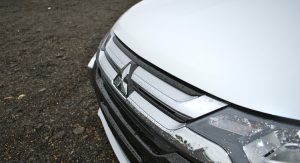
It’s been one week since you looked at me
For those who don’t follow the turmoil of Mitsubishi Motors North America, the Outlander doesn’t appear to carry the baggage of a brand that’s been on the rocks in recent years. Nor does it look like a hastily restyled model to combat criticism of the old one’s anonymous face. Two people saw it in my driveway and said it looked sharp, unironically. Parked in a grocery store parking lot, and it looks like a Subaru Outback at a passing glance. This is a good sign.
Things are somewhat better inside, too. Last year’s fake wood that attempted to look real has been replaced by fake wood that intentionally looks fake, and it’s actually an improvement. The dash still has that ’90s Jeep Grand Cherokee look to it, but it’s mostly well laid out. However, the optional navigation screen looks very aftermarket – a passenger called the map graphics “Etch-a-Sketch meets Lite-Brite.” At least opting for nav gets you a damn fine Rockford Fosgate audio system created as if there was nothing else to listen to but Calvin Harris. Your teenage driver will want to borrow the Outlander for this reason.
While some of the surfaces you touch aren’t half bad for a compact crossover in 2016, there are anachronisms in the strangest places. The seatbelt for the middle second-row passenger is anchored to the ceiling, which means it blocks your view to the back all the time. And I couldn’t figure out how to disconnect it when folding the seats.
A photo posted by Zac Estrada (@zacestrada)
When you do fold the second-row seats, you have to flip the bottom cushion up first using a cheap strap. Pull it, and the cushion springs up in such a way that shows it’s pretty flimsy. But it is fun to play with. The third-row seat folding is also outdated in that you have to take out the headrests (which resemble the foam boards they give to kids learning to swim) and put them in a cubby under the floor and hear them rattle all the time.
Still, there’s good room in both the second and third rows, better than in many midsize crossovers. I’m 5-foot-10 and found the rearmost bench tolerable for a short trip, headroom being the main problem because the second row slides a good way forward for added legroom. And with everything folded, there’s an enormously square cargo hold that’s increasingly hard to find in this segment. The utilitarian nature of the Outlander suddenly makes sense.
A 2.4-liter four-cylinder engine that turns out 166 horsepower doesn’t sound exciting in a seven-seater. And it isn’t. But it’s more sufficient than you might think. You’re stuck with a CVT in the Outlander, which wails under hard acceleration or if you’ve left the car in Eco mode. But things settle down fairly quickly and the Outlander is pretty quiet at speed. Additional insulation for 2016 has paid off. Packed with passengers and cargo, there might be a lack of power. But in every day situations with just two or three people on board and there’s little to complain about.
At 24 mpg overall, however, the Outlander wasn’t as efficient as I expected it to be. Even its EPA estimates are a decidedly average 24mpg city, 29mpg highway. While that’s what I got in a Mazda CX-5 AWD, the Mazda has less car to move around, more horsepower and a better transmission.
Mitsubishi calls their all-wheel drive system Super All-Wheel Control, which is a ludicrous way of saying you have a bit of a say in where the power goes. An economy mode supposedly boosts fuel economy, while there’s also a lock to keep the car in all-wheel drive mode. The Outlander was impressive during the first big El Niño storm to hit Southern California, which happened to be while I was driving over a section of Highway 101 that was covered in water and mud. Which means it’s more than suitable for some light hooning on a mudddy soccer field should you need to impress some second-graders.
The car would be confidence-inspiring were it not for steering that’s too light at highway speeds (and way too heavy at low speeds, like the power assist stops working) and lazy driver assistance features. The adaptive cruise control never really understood what two car-lengths away was and the lane departure warning was hyper-sensitive, as most are.
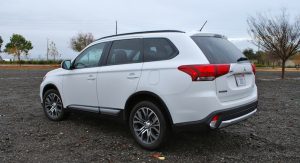
Just breathe
At a touch over $33,000, this is the most you can spend on an Outlander with a four-cylinder engine. A GT model with its V6 engine can hit $36,000 similarly equipped. But aside from a possibly better transmission and better noise, I can’t see any reason to go for that.
I also struggle to justify this loaded up SEL, even if it carries the audio system that makes the whole car worthwhile. A Honda CR-V is just as vast and can be equipped with largely the same features for not much more money, even if it only seats five. However, the CR-V feels more modern and gets better fuel economy. A Nissan Rogue has a truly useless third-row option and also has an engine that’s only adequate – but it boasts more refined technology.
The Outlander does strike a balance between space and price that appeals to more than subprime buyers. And if “Mitsubishi” makes you remember Monteros and not Mirages, there’s no reason the Outlander shouldn’t at least be on your radar. For less than $30,000 (before discounts), it’s a roomy compact crossover that isn’t as horrible to drive as one might think. The fact it has seven seats means it’s a decent family car for just about every situation. Even the best compact crossovers are uninvolving to drive, that’s not what these cars are about at all.
Cars like the Outlander aren’t about you, they’re about the people and things you put in them. And as a way to transport seven people around, the Outlander is a decent value as an elementary school shuttle that doubles as music festival transportation with a sound system to match.
Photos: Zac Estrada/Carscoops



